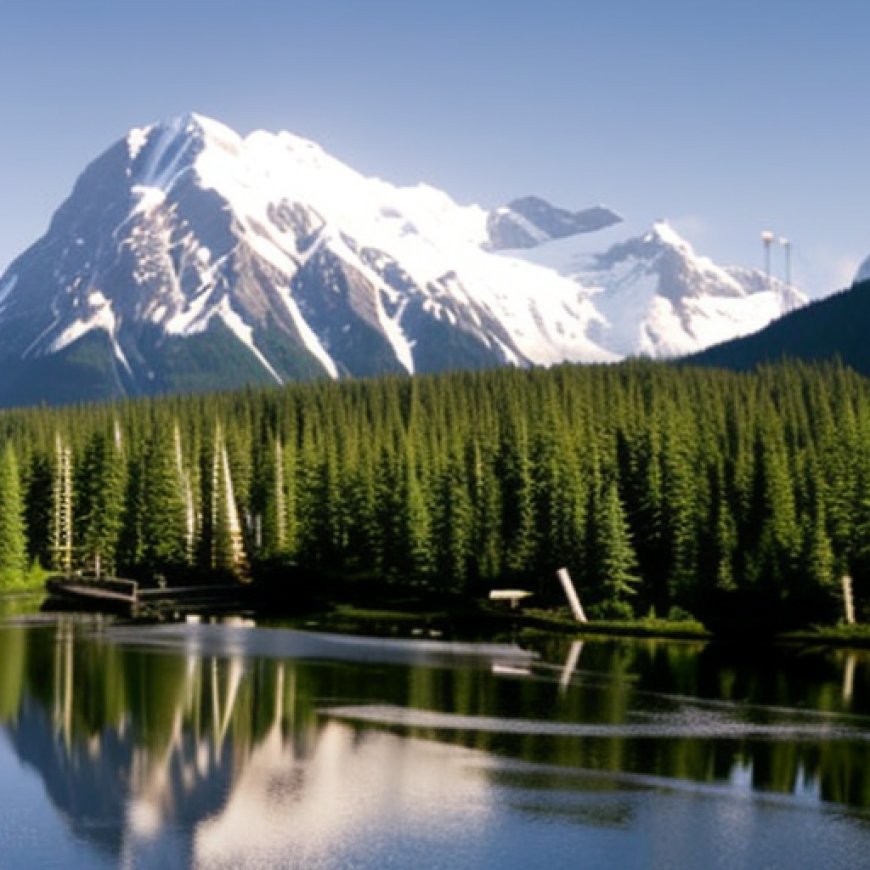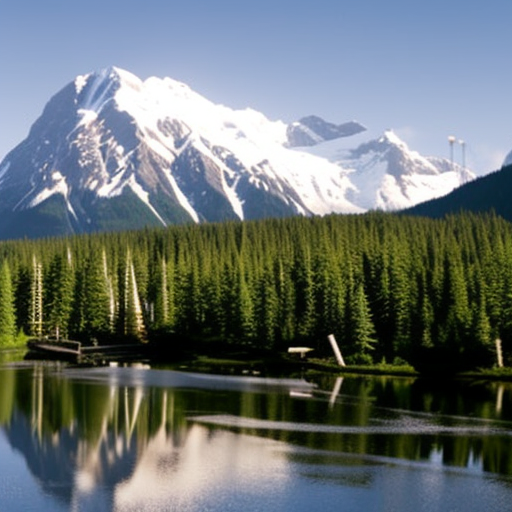New global biodiversity fund launched in Vancouver
New global biodiversity fund launched in Vancouver Global Environment Facility


Global Biodiversity Framework Fund Launched at GEF Assembly

In good news for nature in a challenging moment, representatives of 185 countries agreed at the Global Environment Facility’s Seventh Assembly in Canada to launch an innovative new fund for biodiversity that will attract funding from governments, philanthropy, and the private sector.
The Global Biodiversity Framework Fund (GBFF)
The new Global Biodiversity Framework Fund (GBFF) has been designed to mobilize and accelerate investment in the conservation and sustainability of wild species and ecosystems, whose health is under threat from wildfires, flooding, extreme weather, and human activity including urban sprawl.
The GBFF’s ratification came eight months after the Conference of the Parties to the Convention on Biological Diversity agreed on a historic set of global biodiversity goals known as the Kunming-Montreal Global Biodiversity Framework, and decided to set up a new GEF-managed fund to support its implementation.
Initial Contributions
The new fund was ratified and launched at the GEF Assembly in Vancouver, where two countries announced initial contributions to start its capitalization. This included 200 million Canadian dollars from Canada and 10 million pounds from the United Kingdom.
GEF Assembly
The GEF Assembly has brought together 1,500 people from around the world, including environmental leaders and managers from government, business, academia, and civil society, including Indigenous Peoples, women, and young people.
The once-every-four-year gathering is taking place during a record wildfire season in British Columbia and at the start of what is expected to be a record hurricane season in North America, fueled by record Pacific and Atlantic ocean temperatures.
Positive Impact
“Countries have come together in Vancouver to turn things around for the health of the planet and its people. This is a hugely positive moment that will be remembered far into the future. We have shown at the Seventh GEF Assembly that even in difficult conditions – with wildfire smoke as our backdrop – we can move forward to build a more biodiverse planet for everyone’s benefit,” said Carlos Manuel Rodríguez, CEO and Chairperson of the Global Environment Facility.
Contributions and Goals
The contributions announced in Vancouver will support action towards halting and reversing biodiversity loss by 2030 and putting nature on a recovery path by 2050.
“Biodiversity is the critical foundation of our well-being and the health of our planet. The new Global Biodiversity Framework Fund will play a key role in addressing biodiversity loss. It will address it in developing countries, where the impacts of nature loss are highest; it will address it in a gender-responsive manner, including through cross-sectoral partnerships; it will address it in collaboration with Indigenous Peoples, the original guardians of the lands and seas. Canada is making a significant contribution to this new fund and continuing to show our support for the GEF’s eighth replenishment to ensure the protection of our planet’s biodiversity for generations to come,” said Ahmed Hussen, Canada’s Minister of International Development.
“We are at a pivotal time of unprecedented environmental challenges as the world is being confronted by the triple crises of climate change, pollution, and biodiversity loss. The urgency of a global response has never been greater. Over the last eight months, since COP15, we have seen outstanding collaboration between countries and international partners, and we need to keep the momentum going. Canada’s longstanding partnership with the GEF is central to our efforts and underscores our shared commitment to collaboration and climate action,” said Steven Guilbeault, Canada’s Minister of Environment and Climate Change.
“As we confront the critical challenge of halting and reversing biodiversity loss around the world, working together has never been more important. Our initial contribution to the Global Biodiversity Framework Fund showcases the United Kingdom’s ongoing dedication to protecting our planet’s natural diversity – and through vital international cooperation we are paving the way for a more sustainable future for our planet,” said United Kingdom Nature Minister Trudy Harrison.
Fund Details
The new fund will mobilize and disburse new and additional resources from public, private, and philanthropic sources, with a focus on the sustainability of biodiversity and ecosystems.
As much as 20 percent of its resources will support Indigenous-led initiatives to protect and conserve biodiversity. It will also prioritize support for Small Island Developing States and Least Developed Countries, which will receive more than a third of the fund’s resources.
“The creation of this fund and its commitment to supporting Indigenous Peoples and local communities is an important and clear recognition of the fundamental role they have had for generations protecting biodiversity. We will only achieve the shared vision of a healthy planet and healthy people with collective, inclusive actions, and a human rights approach where we all hold hands together,” said Lucy Mulenkei, Co-Chair of the International Indigenous Forum on Biodiversity.
“We welcome the ratification and launch of the fund. We also welcome the contributions from donors which will facilitate the early operationalization of the fund in advance of COP16. This shows the determination of the world community to implement the Kunming-Montreal Global Biodiversity Framework, and shows that the world is moving from agreement to action,” said David Cooper, Acting Executive Secretary of the Convention on Biological Diversity.
About the Global Environment Facility
The GEF is a family of funds supporting developing countries’ action on inter-related environmental challenges including biodiversity loss, climate change, and pollution. In June, the GEF Council approved the arrangements to establish the fund during a meeting in Brazil.
The GEF is dedicated to confronting biodiversity loss, climate change, pollution, and strains on land and ocean health. Its grants, blended financing, and policy support help developing countries address their biggest environmental priorities and adhere to international environmental conventions. Over the past three decades, the GEF has provided more than $23 billion and mobilized $129 billion in co-financing for more than 5,000 national and regional projects.
SDGs, Targets, and Indicators Analysis
1. Which SDGs are addressed or connected to the issues highlighted in the article?
- SDG 14: Life Below Water – The article mentions the need to protect and conserve biodiversity and ecosystems, which is directly related to SDG 14’s goal of conserving and sustainably using the oceans, seas, and marine resources.
- SDG 15: Life on Land – The article highlights the importance of halting and reversing biodiversity loss, which aligns with SDG 15’s goal of protecting, restoring, and promoting sustainable use of terrestrial ecosystems.
2. What specific targets under those SDGs can be identified based on the article’s content?
- SDG 14.2: By 2020, sustainably manage and protect marine and coastal ecosystems to avoid significant adverse impacts, including by strengthening their resilience and taking action for their restoration, to achieve healthy and productive oceans.
- SDG 15.5: Take urgent and significant action to reduce the degradation of natural habitats, halt the loss of biodiversity, and protect and prevent the extinction of threatened species.
3. Are there any indicators mentioned or implied in the article that can be used to measure progress towards the identified targets?
- Indicator for SDG 14.2: Proportion of total marine area that is protected, by ecosystem type.
- Indicator for SDG 15.5: Red List Index, which measures trends in the overall extinction risk of species.
Table: SDGs, Targets, and Indicators
| SDGs | Targets | Indicators |
|---|---|---|
| SDG 14: Life Below Water | 14.2: By 2020, sustainably manage and protect marine and coastal ecosystems to avoid significant adverse impacts, including by strengthening their resilience and taking action for their restoration, to achieve healthy and productive oceans. | Proportion of total marine area that is protected, by ecosystem type. |
| SDG 15: Life on Land | 15.5: Take urgent and significant action to reduce the degradation of natural habitats, halt the loss of biodiversity, and protect and prevent the extinction of threatened species. | Red List Index, which measures trends in the overall extinction risk of species. |
Behold! This splendid article springs forth from the wellspring of knowledge, shaped by a wondrous proprietary AI technology that delved into a vast ocean of data, illuminating the path towards the Sustainable Development Goals. Remember that all rights are reserved by SDG Investors LLC, empowering us to champion progress together.
Source: thegef.org

Join us, as fellow seekers of change, on a transformative journey at https://sdgtalks.ai/welcome, where you can become a member and actively contribute to shaping a brighter future.







